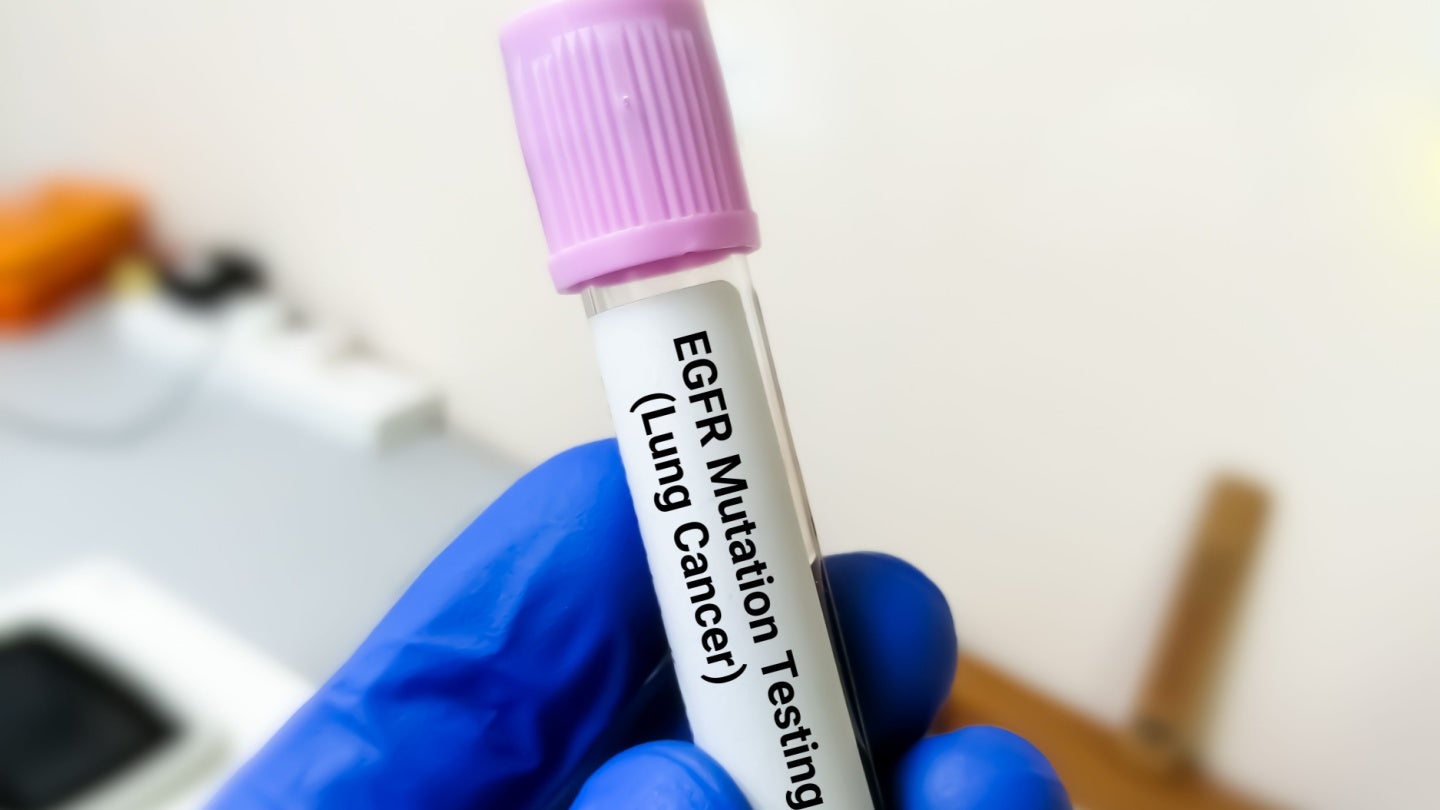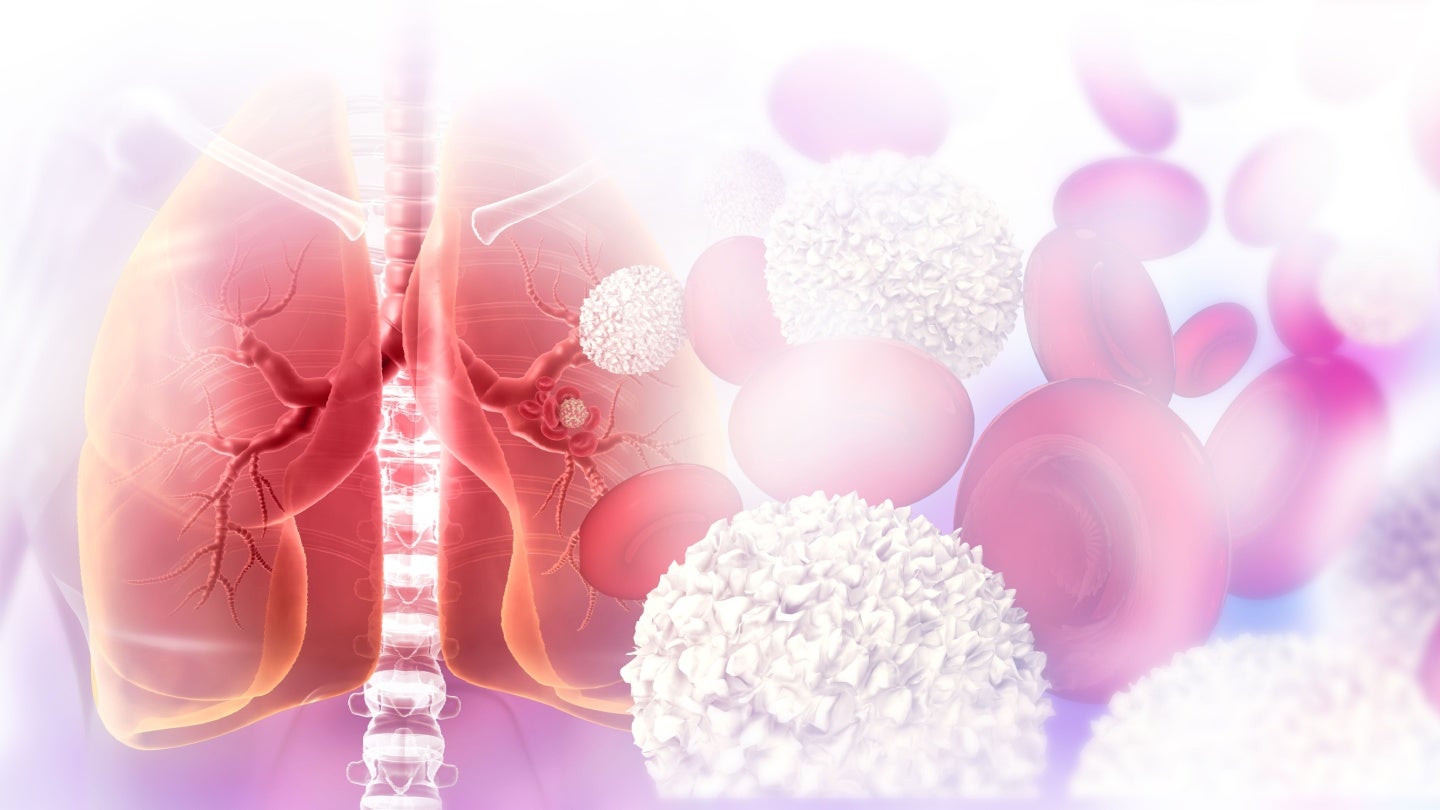Tumor-Microenvironment Crosstalk Drives NSCLC Progression, Therapy Response
The landscape of non-small-cell lung cancer (NSCLC) treatment is transforming at an unprecedented pace, shaped profoundly by the integration of targeted therapies and immunotherapeutic approaches. Though these advances have significantly improved patient outcomes, a substantial cohort of individuals still experience limited or transient responses to current treatment regimens. This unmet clinical need has intensified research […]


The landscape of non-small-cell lung cancer (NSCLC) treatment is transforming at an unprecedented pace, shaped profoundly by the integration of targeted therapies and immunotherapeutic approaches. Though these advances have significantly improved patient outcomes, a substantial cohort of individuals still experience limited or transient responses to current treatment regimens. This unmet clinical need has intensified research efforts to unravel the intricate biology of NSCLC beyond cancer cells alone, increasingly spotlighting the pivotal role of the tumour microenvironment (TME). Recent scientific breakthroughs have illuminated the TME as a dynamic, multifaceted ecosystem that governs tumour progression, metastatic potential, and therapeutic resistance. A comprehensive understanding of this complex interplay holds the key to unlocking new therapeutic modalities that may enhance efficacy and extend survival in NSCLC.
The tumour microenvironment is not a passive bystander but an active participant in NSCLC pathophysiology. It constitutes a diverse amalgamation of cellular and non-cellular components, including immune cells, fibroblasts, endothelial cells, extracellular matrix elements, and soluble factors such as cytokines and chemokines. These components engage in a continuous, bidirectional dialogue with tumour cells, shaping cancer behavior and influencing treatment outcomes. In NSCLC, the spatial organization of these elements forms distinct microanatomical niches—unique “neighbourhoods” within and around tumour nests—that orchestrate heterogeneous microenvironments at the cellular level. Such spatial heterogeneity complicates the understanding of tumour biology but offers opportunities for precise intervention when effectively characterized.
Recent research has delineated several characteristic archetypes of these spatial niches that govern the biological and clinical behavior of NSCLC. For example, peritumoral immune-infiltrated zones exhibiting abundant cytotoxic T lymphocytes contrast sharply with immune-excluded regions dominated by immunosuppressive myeloid cells and regulatory T cells. Each niche exerts a unique influence over tumour progression, metastasis, and sensitivity to various therapies. Emerging multiplex imaging and spatial transcriptomics technologies have been instrumental in mapping these niches in situ, revealing complex intercellular communication networks. Such insights suggest that dissecting niche-specific mechanisms may provide novel biomarkers for patient stratification and therapeutic targeting.
.adsslot_3ZRQHSdJaX{ width:728px !important; height:90px !important; }
@media (max-width:1199px) { .adsslot_3ZRQHSdJaX{ width:468px !important; height:60px !important; } }
@media (max-width:767px) { .adsslot_3ZRQHSdJaX{ width:320px !important; height:50px !important; } }
ADVERTISEMENT
A critical feature underlying the TME’s influence in NSCLC is the balance between inflammation and immunosuppression. Chronic inflammation, often driven by tobacco carcinogens and environmental insults, creates a microenvironment conducive to malignant transformation. Paradoxically, once the tumour is established, the TME frequently shifts towards immunosuppressive pathways that permit tumour escape from immune surveillance. This immunosuppressive milieu involves diverse cell types, including myeloid-derived suppressor cells, tumour-associated macrophages skewed towards an M2 phenotype, and regulatory T cells, all of which hinder effective antitumour immunity. Understanding the molecular switches that mediate this inflammatory-immunosuppressive transition is crucial for developing combinatorial strategies that reawaken the immune system.
Adding another layer of complexity, patient-specific factors such as aging, sex, and socioeconomic status modulate the interplay between NSCLC and its microenvironment. Aging is associated with immunosenescence and altered stromal function, which may impact tumour-immune dynamics and responsiveness to therapy. Sex-related immunological differences influence both innate and adaptive immune compartments, potentially explaining observed disparities in treatment outcomes between male and female patients. Moreover, health disparities rooted in socio-economic status can affect tumour biology indirectly by modifying systemic inflammation, comorbidities, and access to care, thus influencing the TME intermittently. These emerging insights call for personalized consideration of patient context in therapeutic decision-making.
Therapeutic strategies for NSCLC increasingly acknowledge the TME’s central role. Targeted therapies aimed at oncogenic drivers such as EGFR, ALK, and ROS1 mutations demonstrate efficacy but are often circumvented by TME-mediated resistance mechanisms including altered vascular permeability, stromal activation, and immune evasion. Similarly, immune checkpoint inhibitors (ICIs), which unleash T-cell-mediated antitumor responses, show variable effectiveness largely dictated by the TME’s immunological landscape. For instance, tumours embedded in highly suppressive microenvironments frequently fail to respond to ICIs, highlighting the necessity to modulate the TME concomitantly. Novel therapeutic combinations that integrate immune modulation with targeted approaches or TME remodeling agents are under investigation to overcome such barriers.
The modulation of the extracellular matrix (ECM) within the NSCLC TME also presents an intriguing therapeutic avenue. ECM components not only provide structural support but serve as reservoirs of growth factors and modulators of cell signaling. Aberrant remodeling of the ECM fosters tumour invasion and metastasis by creating permissive paths and shielding tumour cells from immune attacks and drugs alike. Therapies directed at normalizing ECM architecture or disrupting key ECM-tumour interactions could potentiate drug delivery and restore immune competence. The dynamic reciprocity between the ECM and cancer cells remains a fertile field for translational research seeking novel intervention points.
Moreover, the crosstalk between cancer-associated fibroblasts (CAFs) and NSCLC cells exemplifies the functional versatility of the stromal compartment. CAFs secrete a plethora of factors that promote tumour growth, angiogenesis, and immune suppression. They also influence resistance to chemotherapy and immunotherapy via paracrine and juxtacrine signals. Deciphering the heterogeneity within CAF populations and their temporal evolution during therapy could yield strategies to selectively target pro-tumorigenic subsets without compromising tissue homeostasis. Integrating CAF-targeted approaches alongside conventional treatments may synergistically enhance tumour control.
In the metastatic cascade, the TME assumes a critical role not only at the primary tumour site but also at distant organ sites. Pre-metastatic niches primed by primary tumour-secreted factors condition remote tissues, facilitating the engraftment and survival of disseminated tumour cells. NSCLC frequently metastasizes to the brain, bone, and adrenal glands, where niche-specific interactions with resident stromal and immune cells further complicate therapeutic interventions. Targeting these secondary microenvironments emerges as an essential strategy to prevent or limit metastatic progression, an area currently under intense investigation employing multi-omics and in vivo modeling approaches.
Therapeutic resistance in NSCLC stems from multifactorial mechanisms involving both intrinsic tumour cell adaptations and extrinsic TME-mediated influences. Hypoxia within the TME induces metabolic rewiring and activation of survival pathways that diminish drug efficacy. Similarly, the recruitment and education of immunosuppressive cells enable tumours to circumvent immune-mediated elimination. Real-time profiling of the TME during treatment could uncover dynamic biomarkers of resistance, facilitating adaptive therapeutic regimens and early intervention prior to clinical relapse.
The integration of advanced spatial and single-cell technologies into NSCLC research heralds a new era of precision oncology. Detailed mapping of cellular interactions and signaling networks at unparalleled resolution allows for the identification of novel therapeutic targets within the TME that were previously obscured by bulk analyses. Such approaches enable the design of precision immunotherapies tailored not only to tumour genetic profiles but also to their microenvironmental context, potentially transforming standard-of-care paradigms.
Finally, the convergence of computational modeling and artificial intelligence provides powerful tools to synthesize the complexity of NSCLC TME data into actionable insights. Predictive models incorporating patient-specific variables and TME features may enhance prognostication and guide personalized treatment selection. Machine learning algorithms applied to large-scale datasets continue to uncover hidden patterns and therapeutic vulnerabilities, accelerating the discovery pipeline. As these technologies evolve, they promise to bridge the gap between bench-side mechanistic studies and bedside clinical application.
In conclusion, the tumour microenvironment stands at the forefront of NSCLC research as a determinant of tumour behavior, therapeutic response, and clinical outcomes. Its intricate architecture and dynamic interactions demand a holistic and integrative approach to understand and manipulate its influence effectively. By dissecting spatial niches, inflammatory versus immunosuppressive states, and patient-related modulators, researchers are unraveling the complex network driving NSCLC progression and resistance. These insights are catalyzing the development of next-generation therapies that strategically target both cancer cells and their supportive microenvironment, offering renewed hope for patients burdened by this formidable disease.
Subject of Research: The crosstalk between non-small-cell lung cancer (NSCLC) and its tumour microenvironment (TME), and its impact on tumour progression and treatment response.
Article Title: Tumour and microenvironment crosstalk in NSCLC progression and response to therapy
Article References:
Rahal, Z., El Darzi, R., Moghaddam, S.J. et al. Tumour and microenvironment crosstalk in NSCLC progression and response to therapy. Nat Rev Clin Oncol (2025). https://doi.org/10.1038/s41571-025-01021-1
Image Credits: AI Generated
Tags: crosstalk between tumor cells and microenvironmentcytokines and chemokines in cancer therapyenhancing efficacy in lung cancer treatmentsextracellular matrix and tumor behaviorfibroblasts and cancer interactionsnon-small cell lung cancer treatment advancementsrole of immune cells in NSCLCspatial organization of tumor microenvironmenttargeted therapies and immunotherapytherapeutic resistance in lung cancertumor microenvironment in NSCLCtumor progression and metastasis
What's Your Reaction?


































